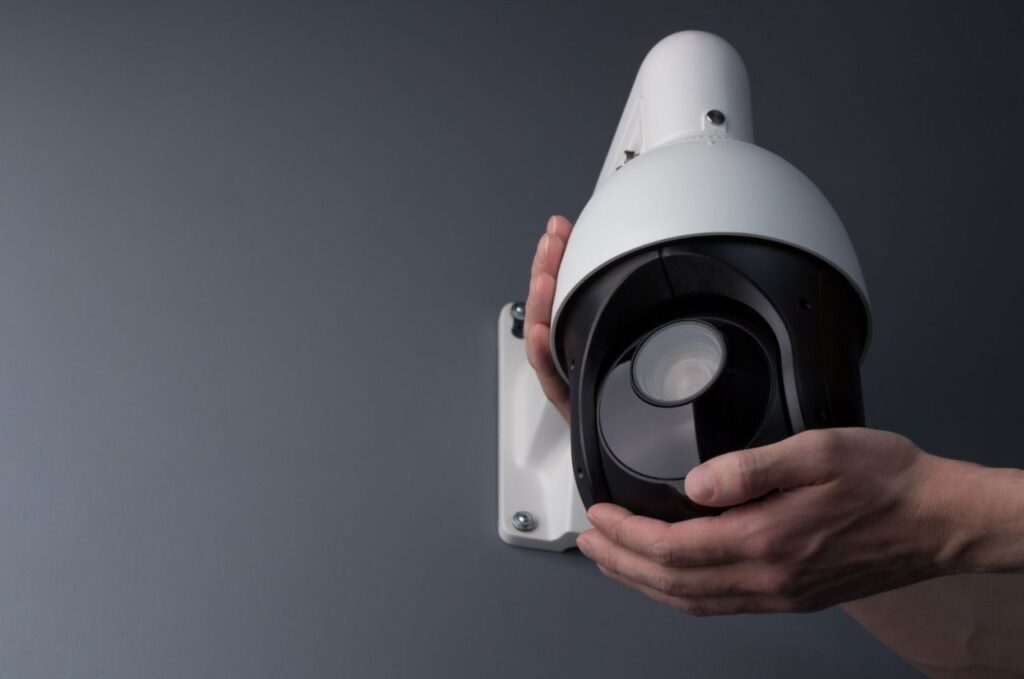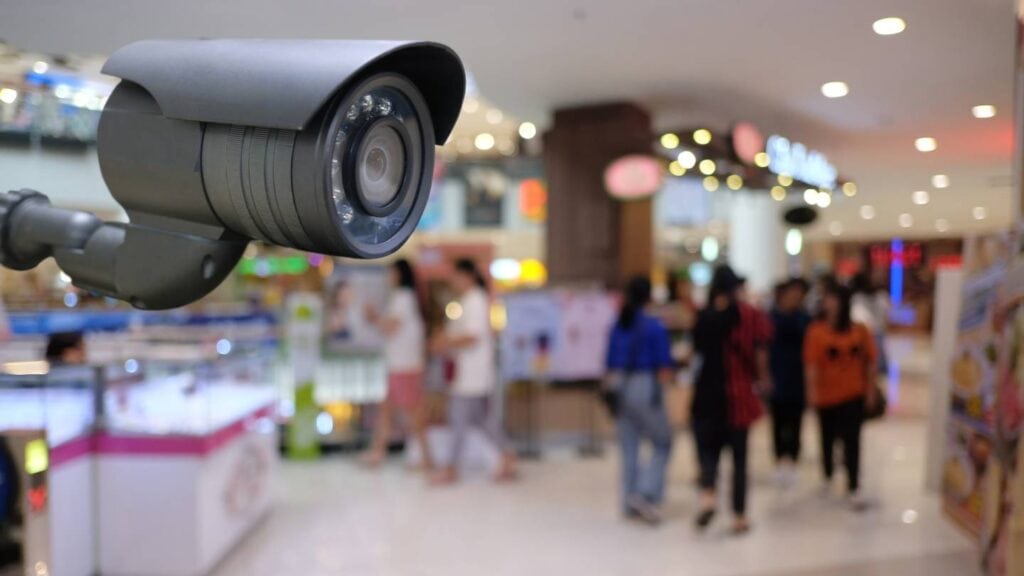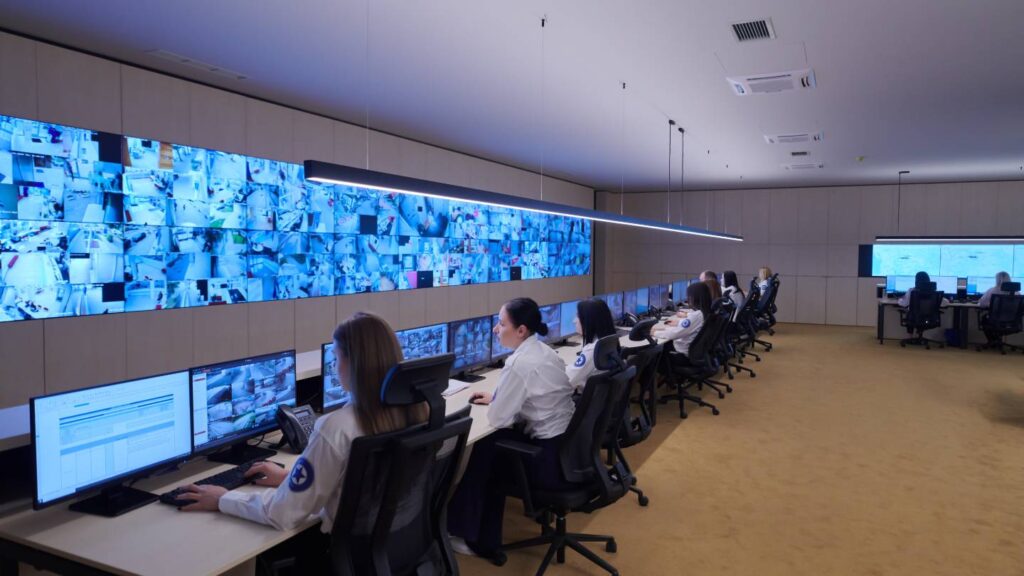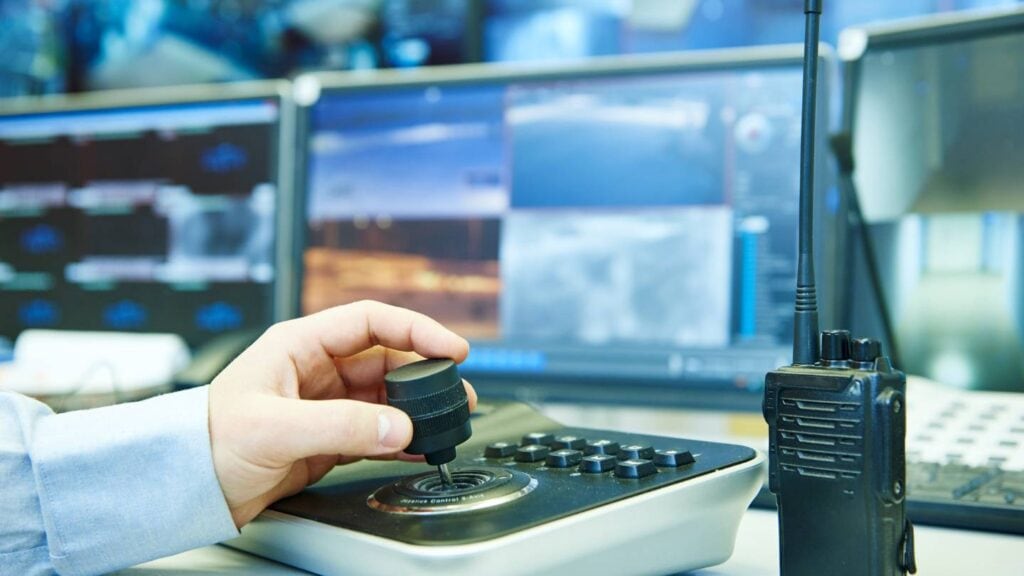Protecting our houses and places of business has never been more important than in the modern world. On the other hand, many people need help with how they will pay for a complete security system. For people and businesses, the age-old conundrum of "How can I balance the cost of a security system with its effectiveness?" is an ongoing challenge. Because of this difficulty, we are driven to provide affordable solutions that meet the necessary level of protection.
We shall explore several approaches in this introduction to strike this balance while keeping safety measures efficient and within budget. The objective is to offer insights that aid in making educated decisions, from comprehending the unique security requirements to choosing the appropriate technology and services. This method guarantees that security system investments are effective and economical, providing peace of mind.
Business Security System Costs: Balancing Investment And Risk Management
Businesses today face many hazards, from traditional crimes such as robbery and burglary to more modern perils such as hacking and data leaks. Companies put money into security systems to ward off these threats, but how much should they spend? How can they strike the right balance between spending money and managing risks?
First, you must understand the expenses associated with business security solutions. Several factors, including company size, security system type, and required level of protection, determine the final price. Some security systems are alarms, cameras, access control systems, and monitoring services. The price tag may be several thousand to tens of thousands of dollars.
Having a security system may be expensive, but the alternative can be much worse. In addition to the obvious financial losses, a company's credibility and client confidence can take a serious hit in the event of a break-in or theft. Similarly, a breach of information can cause significant monetary losses, regulatory fines, legal expenses, and harm to the company's brand.
The question, therefore, becomes, how can businesses strike a balance between investing and risk management? Some considerations are as follows:

Perform Risk Assessment
Every firm must first conduct a risk assessment to safeguard themselves from possible security threats. Businesses might benefit from conducting risk assessments to understand better what threats exist, how serious they are, and what protections are necessary. When it comes to the expenses of business security systems, a risk assessment can assist organisations in finding the right balance between investment & risk management.
To carry out a risk assessment, companies might follow these steps:
- Identify Assets: Locating the valuables that need protection is the initial stage in undertaking a risk assessment. A company's assets might be either real, like buildings and equipment, or intangible, such as customer data and intellectual property.
- Identify Threats: After cataloguing the assets, Step two is to catalogue the dangers. Dangers can take many forms, including physical ones like theft and vandalism and digital ones like hacking and data breaches.
- Assess Vulnerabilities: Once a company has identified its assets and threats, it is time to evaluate its vulnerabilities. Security vulnerabilities are openings that malicious actors can use to compromise a system. Burglary is more likely to occur in a building with poorly secured locks and windows.
- Determine the Likelihood and Impact of Each Threat: After analysing vulnerabilities, businesses should determine the probability and severity of each threat. A threat's effect is the possible harm it could cause, whereas likelihood is the probability that the danger will materialise. By calculating the probability and severity of each danger, businesses can allocate their security budget more wisely.
- Identify Existing Security Measures: The efficacy of current security measures has to be evaluated by businesses. For instance, it is important to check that security cameras are in good functioning condition and installed in appropriate locations if a business has them.
- Identify Additional Security Measures: In light of the dangers discovered, businesses should determine what extra security measures are necessary to mitigate them. These solutions include more surveillance cameras, mechanisms to regulate who can enter and exit, and monitoring services.
- Evaluate the Cost-Effectiveness of Security Measures: Lastly, businesses need to determine which security measures are worth the money. The term "cost-effectiveness" describes how well a security solution reduces a given risk relative to its cost. When companies compare the cost-effectiveness of different security systems, they can determine the most cost-effective ones.
Determine Protection Needed
Determining the required protection level is essential when calculating the expense of business security systems. Several considerations, such as the firm's industry, size, location, and the value of the assets that need to be protected, will decide the level of security necessary. Take into account these important considerations when determining the level of protection needed for a company's security system:
- Industry: What constitutes an adequate level of security will vary across industries. Due to the high monetary value and high likelihood of theft, a jewellery store may need a more stringent security system than a clothes store. Similarly, a bank or other financial organisation may need more stringent security measures than a typical retail establishment due to the very sensitive information and assets they handle.
- Size of The Business: A company's size is another factor determining the appropriate security degree. A bigger corporation with multiple sites may require more security measures compared to a smaller business with a single site.
- Location: The company's physical location is another important factor. Stronger security measures may be necessary for a business within a high-crime area or one that has a history of break-ins compared to one in a low-crime area.
- Value of Assets: Another crucial consideration is the monetary worth of the assets that need protection. Organisations that possess high-value assets, like costly machinery, precious products, or confidential information, may require an increased degree of protection compared to those that possess lower-value assets.
- Regulatory Requirements: For certain companies, the amount of security that is necessary is dictated by regulations. The Healthcare Portability and Accountability Act (HIPAA) imposes stringent security requirements on healthcare providers to protect patient data.
After determining the required level of protection, businesses can tailor their security examinations to meet their specific needs. Methods such as this include security cameras, alarm systems, access control, and monitoring services. Regular security system reviews are necessary to ensure its effectiveness since the amount of safeguarding required can change over time due to changes in the business's environment or new security threats.
Considering Total Cost Of Ownership
Consider the TCO when determining how much your business will need to invest in security solutions. The TCO of a security system is its overall cost, including initial investment and ongoing maintenance, over its useful life. By calculating the total cost of ownership (TCO), businesses can make smart choices about the security system investment and get the most bang for their buck. Think about these things when you figure up the total cost of ownership (TCO) of your business's security system:
- Upfront Costs: An initial investment in a security system will include the cost of the necessary hardware and software and any expenses associated with installation and initial setup and configuration. To find the best security system for their money, businesses should compare the initial costs.
- Maintenance and Support Costs: Total Cost of Ownership (TCO) calculations for security systems should also account for ongoing support and maintenance expenses. Updates to software and hardware and fees for technical support are all part of the package. Considering the total cost of ownership (TCO), it is important to account for any security system's maintenance and support expenses.
- Operating Costs: Operating costs are the ongoing expenditures of using a security system, like power and internet. To determine the optimal total cost of ownership (TCO), companies should compare the operational costs of various security systems.
- Training Costs: Include the expense of training in the total cost of ownership (TCO) if staff need to be trained to use the security system. A trainer's salary or other compensation for employee training time could fall under this category.
- Replacement Costs: Wear and tear and eventual obsolescence can necessitate the replacement of security systems at some point. Businesses should include the cost of replacing a security system in their long-term budget when calculating the total cost of ownership (TCO).
Last, weighing the benefits and drawbacks is essential for determining the optimal investment & risk management strategy for a company's security systems. Businesses can safeguard themselves from possible dangers and make educated decisions regarding security investments by performing risk assessments, figuring out how much protection is needed, adding up the cost of ownership, calculating the return on investment, and choosing a trustworthy security provider.
6 Essential Tips To Cut Office Security Costs
No matter how big or small, every company must prioritise office security. It aids in preventing theft, vandalism, and other dangers to data, property, and employees. On the other hand, office security measures are pricey. It is important to find ways to lower office security costs without sacrificing safety in light of the current economic situation.
Thanks to several essential pointers, a strong security system doesn't have to break the bank. Companies can protect their assets without going into debt by using these tactics. To help reduce security expenses, here are six vital tips:
Security Firm Hire
Hiring a security company is a smart way to reduce office security costs. You may save money without sacrificing protection by teaming up with a reliable local security guard firm that provides a spectrum of technological and physical security services, including mobile patrols, commercial surveillance cameras, and security guards.
You can avoid making expensive security technology and supplies expenditures by outsourcing this task to the company. They will procure and maintain all the resources you require. So long as you do this, you can concentrate on running your company and use your financial resources better.
Collaborate With An IT Affiliate
You may reduce office security costs by working with a cybersecurity professional and IT partner. They can assess your security setup, find weak spots, and provide affordable fixes.
In addition, your office is safeguarded from the most recent cybersecurity hazards by their industry insights & current awareness of developing threats. It's a wise purchase that will provide you comfort and savings in the long run.
Perform Evaluations Of Security
A security audit is an important first step in cutting costs on office security. Evaluate your present security measures to find ways to make them better and save money. You can find weak spots and create solid plans to fix them by closely examining your office's security infrastructure.
To start, you need to take the initiative regarding office security and figure out how to improve it. Check out your security systems, alarms, and surveillance equipment. Last, check for inefficient processes or antiquated machinery that could drive up your security costs.
Security Training For Employees
Building a culture of accountability and alertness among workers can be achieved through security risk and best practice education. One way to make the workplace safer is to raise awareness among workers about possible dangers. This protects data and other company assets from potential dangers, lowering the cost of recovering from an assault.
To further reduce security expenditure, it is advantageous to encourage staff to report questionable behaviour. Businesses can prevent security breaches by fostering an environment where employees are comfortable reporting situations that raise concerns. Costly security issues can be prevented by prompt reporting, which enables rapid response and mitigation.

Use Access Control
Implementing access control systems is a game-changer in reducing workplace security expenditures. Using key cards or biometric systems, you can restrict access to your premises to authorised personnel only. Rekeying and replacing locks because of lost or stolen keys is a costly ordeal that our technology makes unnecessary.
With an access control system, you can manage every person who enters your business, increasing security and decreasing costs. This reduces the likelihood of security breaches and unauthorised access by ensuring workers can only access the places they need to do their jobs. Using stronger access control measures, you can make your workplace safer and less vulnerable to expensive mishaps or data breaches caused by unauthorised personnel.
Review And Update Security Policies Regularly
To proactively fix any vulnerabilities in your system, staying current on the latest security threats and remedies is important. To maximise efficiency without jeopardising your business's and people's safety, you can alter security measures as needed.
The ability to optimise cost efficiency by adjusting security measures is a significant benefit of assessing & updating security policies regularly. Some precautions may become excessive or outdated when security risks and technology change, leading to wasteful spending.
Reviewing your security policies regularly might help you optimise cost efficiency by adopting new technology, streamlining processes, or eliminating duplicate measures. The key to successfully minimising office security expenses is to remain proactive and adaptable.
Conclusion
Balancing the cost of a security system with its effectiveness is a challenge for both individuals and businesses. This article explores affordable solutions, focusing on understanding unique security requirements and choosing appropriate technology and services. Balancing investment and risk management ensures effective and economical security system investments.
A breach of information can lead to significant financial losses, regulatory fines, legal expenses, and harm to a company's brand. To balance investment and risk management, businesses should conduct a risk assessment, identify assets, threats, assess vulnerabilities, and determine the likelihood and impact of each threat.
Businesses should evaluate their existing security measures, identify additional measures, and assess the cost-effectiveness of these measures. They should also determine the required protection level, considering factors like industry, size, location, and asset value. The appropriate level of security depends on the company's size and the value of its assets.
The total cost of ownership (TCO) of a security system is the overall cost, including initial investment, ongoing maintenance, and maintenance over its useful life. Businesses should consider factors such as location, value of assets, regulatory requirements, and the need for regular system reviews to ensure the best protection.
To find the best security system, businesses should compare initial costs, maintenance and support expenses, operating costs, training costs, and replacement costs. Balancing benefits and drawbacks is crucial for making informed decisions. Office security is essential for preventing theft, vandalism, and other threats, but it can be expensive.
To lower office security costs without sacrificing safety, consider hiring a security firm, collaborating with an IT affiliate, and performing security audits. Outsourcing security services allows for better focus on business operations. Collaborating with cybersecurity professionals and IT partners can also help identify weaknesses and provide affordable solutions.
To reduce security costs, check your security systems, alarms, and surveillance equipment, and identify inefficient processes. Implement security training for employees, encourage staff to report concerns, and use access control systems to restrict access. Regularly review and update security policies to address vulnerabilities and ensure business efficiency without jeopardizing safety.
Regularly updating and assessing security policies can optimize cost efficiency by adjusting precautions to avoid outdated or outdated measures, streamlining processes, and eliminating duplicate measures.
Content Summary:
- Businesses face various threats, from traditional crimes to modern threats like hacking and data leaks.
- The cost of a security system can range from several thousand to tens of thousands of dollars.
- A security system can protect a company's credibility, client confidence, and brand.
- Businesses must conduct a risk assessment to understand the threats, their severity, and the necessary protections.
- Steps include identifying assets, threats, vulnerabilities, probability and impact of each threat, evaluating existing security measures, identifying additional security measures, and evaluating cost-effectiveness of security measures.
- The level of protection needed depends on the company's industry, size, location, and the value of the assets to be protected.
- Industries may require more stringent security measures due to high monetary value and high likelihood of theft.
- Businesses with multiple sites or a history of break-ins may require more security measures.
- Businesses in high-crime areas or areas with a history of break-ins may require stronger security measures.
- High-value assets may require an increased degree of protection.
- Regulatory requirements may dictate the amount of security required for certain companies.
- Businesses can tailor their security examinations to meet their specific needs.
- Regular security system reviews are necessary to ensure the effectiveness of the system.
- TCO is the overall cost of a security system, including initial investment and ongoing maintenance, over its useful life.
- Upfront costs include hardware and software costs, installation and setup costs, and any associated expenses.
- Maintenance and support costs include updates to software and hardware, and fees for technical support.
- Operating costs include ongoing expenses like power and internet.
- Training costs include the cost of staff training to use the security system.
- Replacement costs include the cost of replacing a security system in the long-term budget.
- Hire a security firm: Outsourcing security technology and supplies to a reliable local firm can save money without sacrificing protection.
- Collaborate with an IT affiliate: Working with a cybersecurity professional and IT partner can assess your security setup, identify weak spots, and provide affordable fixes.
- Perform security audits: Conducting a security audit can identify areas for improvement and save money.
- Security training for employees: Building a culture of accountability and alertness among workers can make the workplace safer.
- Use access control systems: Restricting access to premises to authorised personnel can reduce security costs.
- Regularly review and update security policies: Staying current on the latest security threats and remedies can proactively fix any vulnerabilities in your system.
Frequently Asked Questions
Such vendors likely have a deeper understanding of retail-specific challenges and requirements, potentially offering more tailored solutions and valuable insights into best practices for retail security.
Discuss your current setup with vendors and ask how their system can integrate with your existing technology. Consider any necessary upgrades or changes.
High-quality support and maintenance services are crucial for resolving issues quickly, ensuring system uptime, and keeping your security measures effective over time.
Look for systems with intuitive interfaces and ask for a demo to assess ease of use. Consider the training and support the vendor offers to help your staff become proficient.
Choose a vendor with a strong track record, ensure the system is scalable and can be updated as technology evolves, and consider a service agreement that includes regular maintenance and support to maximise the system's lifespan and effectiveness.

















